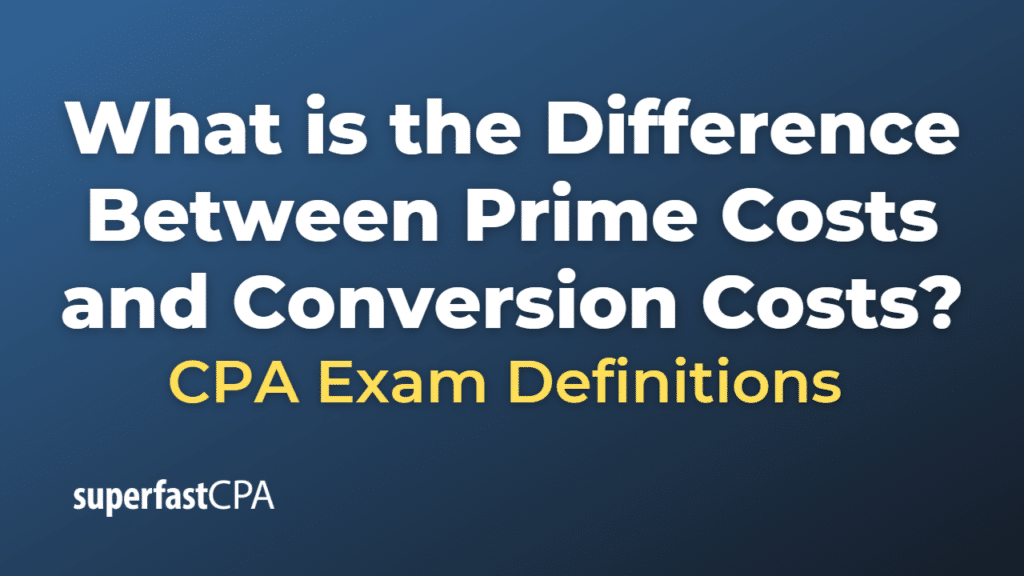Difference Between Prime Costs and Conversion Costs
Prime costs and conversion costs are concepts used in cost accounting, specifically in the manufacturing sector, to understand and categorize the costs associated with producing goods. Here’s how they differ:
Prime Costs:
Prime costs are the direct costs of producing goods. They include:
- Direct Materials: These are the raw materials that go directly into the production of a product. For example, if you’re manufacturing chairs, the wood used to make the chair is a direct material.
- Direct Labor: This is the cost of the labor directly involved in the production of a product. In the chair manufacturing example, this would include the wages of the workers who assemble the chairs.
In summary, prime costs = direct materials + direct labor.
Conversion Costs:
Conversion costs are the costs incurred to convert raw materials into finished products. They include:
- Direct Labor: Again, this is the cost of labor directly involved in the production process.
- Manufacturing Overhead: These are all the other costs involved in the manufacturing process that are not direct materials. Overhead costs include things like utilities, depreciation on equipment, rent for the manufacturing facility, and indirect labor costs (like the salaries of supervisors or maintenance staff).
In summary, conversion costs = direct labor + manufacturing overhead.
While both prime costs and conversion costs include direct labor, the key difference lies in the other component of each. Prime costs include direct materials, while conversion costs include manufacturing overhead. These calculations are used by management to understand the cost structure of their production processes, optimize efficiency, and make pricing decisions.
Example of the Difference Between Prime Costs and Conversion Costs
Let’s imagine a simple scenario with a company that manufactures wooden tables.
Prime Costs Example:
- The direct materials, the cost of wood, is $50 per table.
- The direct labor, the wages paid to the workers to make each table, is $30.
Therefore, the prime cost per table is $50 (direct materials) + $30 (direct labor) = $80.
Conversion Costs Example:
- The direct labor cost is the same as above, $30 per table.
- The manufacturing overhead, which includes costs like electricity, depreciation on the machinery used, and the salary of the factory supervisor, is estimated to be $20 per table.
Therefore, the conversion cost per table is $30 (direct labor) + $20 (manufacturing overhead) = $50.
This shows the difference between the prime and conversion costs: the prime cost includes the cost of the raw material (wood), while the conversion cost includes the overhead costs associated with turning the raw material into the final product. Both include the direct labor costs.













